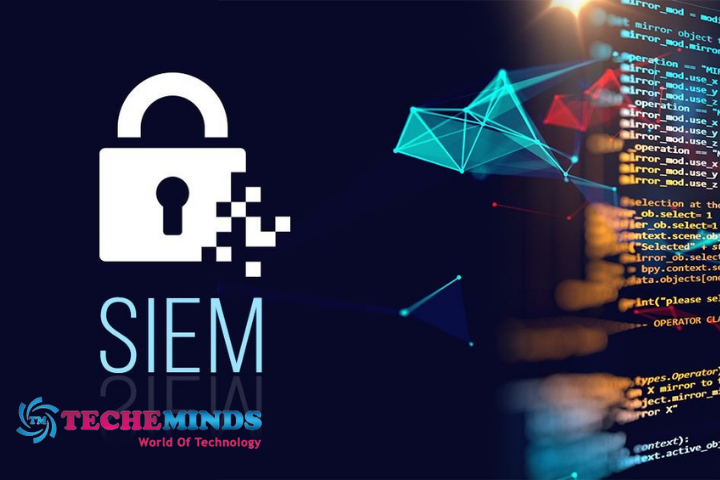What Is SIEM And What Is It For?

Ever-evolving information technology makes it easier to do business. However, as usual, there is another side to the coin. The constantly increasing number of information flows only allows you to manually monitor some processes and ensure information security in the company. The corporate network is under constant threat without a properly configured network tracking system.
Protection systems always keep pace with the times, and now, leading antivirus developers are developing their SIEM solutions that help add another layer of protection to the network.
Table of Contents
SIEM
Security Information and Event Management is a system that monitors all data flows and activities on the network, preventing cyber criminals from stealing important data. In the modern world, hackers do not act directly but try to obtain important corporate data using hidden methods due to equipment vulnerabilities or network topology.
The principle of operation of SEIM systems is quite simple. The program collects and analyzes data from various sources cyclically. The system can block data transmission if it considers the actions unauthorized. Also, the system collects and organizes the database, analyzes user behavior, and compares it with past actions, thus highlighting dangerous actions and issuing warnings and alerts. A separate stage of development is the introduction of SIEM into antivirus solutions; therefore, the network perimeter becomes even more secure.
SIEM system consists of modules and components
Any SIEM system consists of modules and components that are responsible for specific actions:
- Access control and authentication. This module keeps track of who gets access to information and when.
- DLP. Such systems track whether there have been attempts to bring critical data outside the network perimeter.
- IPS / IDS. The modules track network attacks and pass them on to the next level, which must fight such attacks.
- Antiviruses. They send notifications about threats found in the system.
- Firewall/firewall. Collect information about dangerous activities on the network and find malware.
- Equipment. Performs traffic accounting and controls user access to data streams.
The main task of SIEM is to analyze network data, summarize it, and compare statistics with past periods. So, for example, a script is launched with a certain action. The system tracks its launch, and the next time this script is run, an event will be generated that will be considered suspicious. After that, the data is transferred to the responsible employee or immediately to the antivirus software.
What is a SIEM system for in an enterprise
- Detection of cyberattacks, external and covert.
- Detection of point attacks.
- Detection of attempts to obtain unauthorized access to files or information streams.
- Detection of data leaks and corporate fraud attempts.
- I am finding weak points in network security.
- Detection of targeted attacks to steal corporate data.
There are many systems from various manufacturers in the cybersecurity market. We highlight the McAfee Enterprise Security Manager solution from the world’s leading cybersecurity leader. In addition to all the advantages inherent in any SIEM, this solution integrates seamlessly with the company’s antivirus software, has excellent scalability, and covers the full range of tasks thanks to the ability to connect various modules.
You can evaluate the benefits of SIEM according to such criteria.
The number of event sources that the system is capable of handling.
The more sources a system can handle, the more efficient it will be. However, each source must have an individual approach. Increasing the system’s efficiency is possible by dividing events into categories and creating separate rules for each category. Categories can be updated independently after updating the network configuration or adding equipment.
In this case, the advantage will be an automatic mode of finding changes in the network and automatic updating of rules based on heuristic analysis and artificial intelligence. The benefits of the system are multilevel analysis and multithreaded scanning. This makes the system faster, more efficient, and easier to adapt to new software.
Collecting incident statistics
The system will be effective if it can quickly and accurately combine, analyze, and filter emerging incidents. Another advantage is the ability to store raw events. However, the speed of such event processing has little effect on the system’s efficiency. In addition, monitoring network traffic will not be deprived in such a system. You can check the effectiveness only in real mode, and sometimes, manufacturers provide a trial version for such purposes.
Correlation of events
A sound SIEM system can analyze data in real-time, conduct behavioral analysis, and compare it with previously recorded data. It also has manual analysis capabilities and can work in multithreaded mode.
Reporting and data visualization
Reporting in SIEM systems is data displayed in tables, graphs, etc. Usually, the user can output reports in popular formats, such as XLS, pdf, rft, HTML, and CSV. In this case, an advantageous difference among other systems will be the Russified interface.
Ease of configuration and use
An important criterion is a straightforward visual interface and a cloud-based control panel, through which an information security specialist can react to emerging events anytime. The centralized control panel also allows you to change privacy policies conveniently, templates for reports, etc.
It is also important to consider how the technical support from the selected system’s manufacturer works. Getting fast and professional support is sometimes critical.
After compiling a list of the required functionality, you can evaluate an SIEM system according to its main available characteristics. Still, the most profitable solution is implementing the system more profoundly into the company’s IT infrastructure. To do this, it is better to get advice from trusted and certified specialists who will help you select the necessary modules and deploy SIEM, taking into account all the nuances of a specific network.
Also Read : Regulatory Compliance And Network Security: Navigating The Modern Landscape




